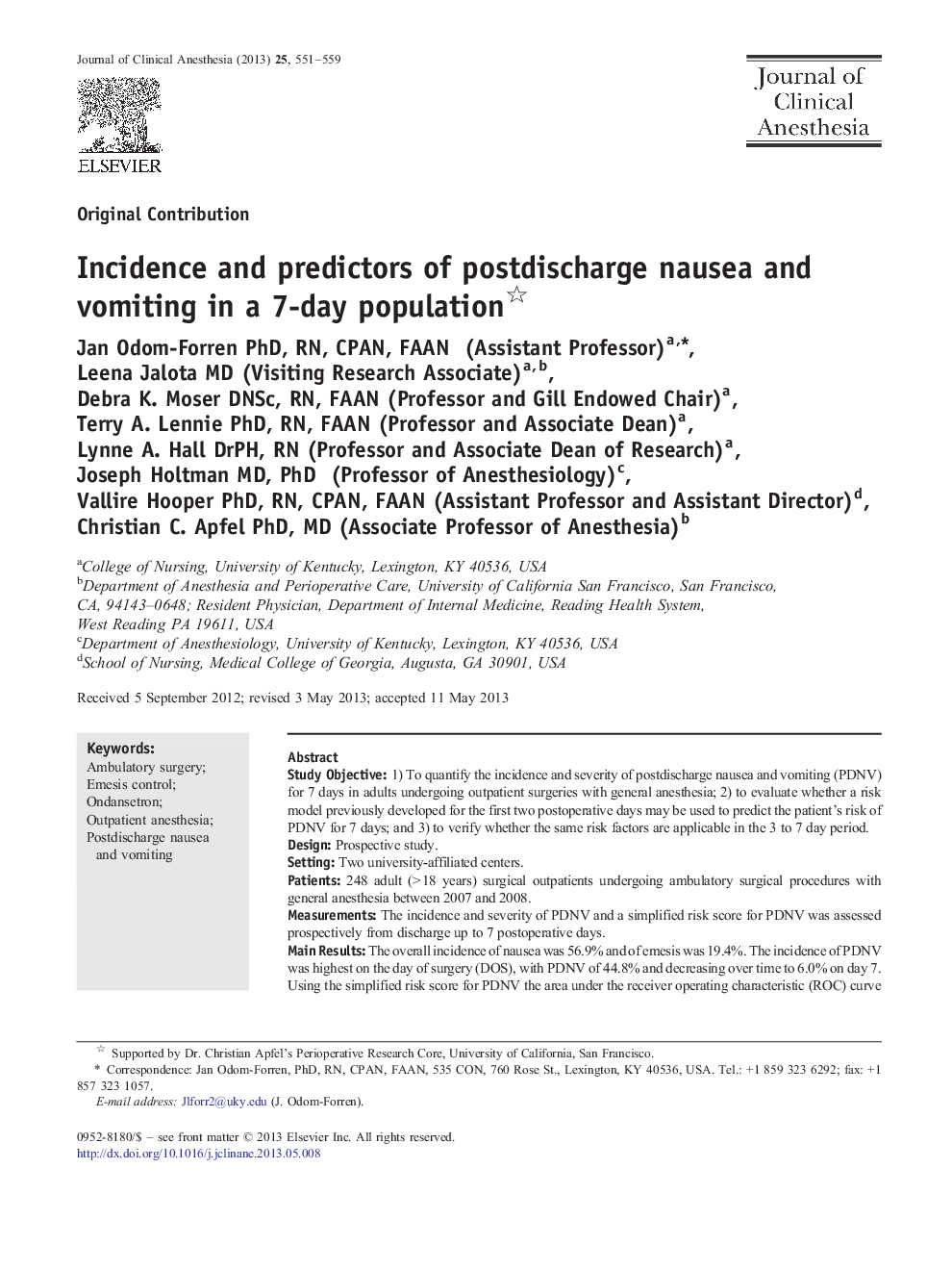| Article ID | Journal | Published Year | Pages | File Type |
|---|---|---|---|---|
| 2762726 | Journal of Clinical Anesthesia | 2013 | 9 Pages |
Study Objective1) To quantify the incidence and severity of postdischarge nausea and vomiting (PDNV) for 7 days in adults undergoing outpatient surgeries with general anesthesia; 2) to evaluate whether a risk model previously developed for the first two postoperative days may be used to predict the patient’s risk of PDNV for 7 days; and 3) to verify whether the same risk factors are applicable in the 3 to 7 day period.DesignProspective study.SettingTwo university-affiliated centers.Patients248 adult (> 18 years) surgical outpatients undergoing ambulatory surgical procedures with general anesthesia between 2007 and 2008.MeasurementsThe incidence and severity of PDNV and a simplified risk score for PDNV was assessed prospectively from discharge up to 7 postoperative days.Main ResultsThe overall incidence of nausea was 56.9% and of emesis was 19.4%. The incidence of PDNV was highest on the day of surgery (DOS), with PDNV of 44.8% and decreasing over time to 6.0% on day 7. Using the simplified risk score for PDNV the area under the receiver operating characteristic (ROC) curve was 0.766 (0.707, 0.825). A previous history of postoperative nausea and vomiting (PONV; OR 3.51, CI 1.70 - 7.27), operating room time (odds ratio [OR] 2.19, 95% CI 1.34 - 3.60), use of ondansetron in the Postanesthesia Care Unit (PACU; OR 6.39, CI 1.65-24.79), and pain during days 3–7 (OR 1.67, CI 1.30 - 2.14) were the strongest predictors of PDNV on days 3–7.ConclusionsPDNV affects a significant number of patients after ambulatory surgery, and our simplified PDNV score may be applied to a 7-day population. Pain appears to be a factor in late PDNV. It is possible that the presence of PDNV during days 3–7 has different origins from the PDNV that resolved over the first 48 hours.
